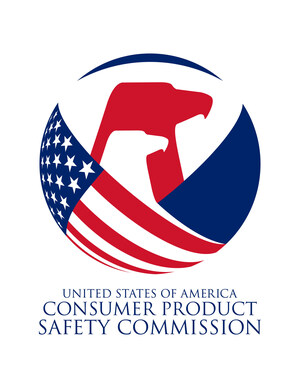WASHINGTON, June 28, 2012 /PRNewswire-USNewswire/ -- The U.S. Consumer Product Safety Commission (CPSC) is urging ATV riders to stay safe on the trails and make 2012 the year that curbs the annual rise in deaths and injuries seen every summer.
(Logo: http://photos.prnewswire.com/prnh/20030904/USCSCLOGO)
On average for 2004 to 2006, deaths of children aged 16 and younger rose about 65 percent from March to April. Adult deaths rose 85 percent over the same period. If riders are not vigilant about safety, reports of ATV-related deaths are expected to continue to rise through the summer, peaking in July.
On average, each year from 2004 to 2010, there were nearly 700 ATV-related fatalities and about 136,000 emergency-department treated injuries, many of which were life-altering.
Already this year, CPSC staff has received preliminary reports of 130 adults and 28 children under the age of 16 who died since January in ATV-related incidents around the country. As of June 1, at least 14 adults and three children were reported to have died from incidents occurring during the Memorial Day holiday weekend, May 25 to May 28.
Many deaths and injuries occur when an inexperienced driver loses control of an ATV, is thrown from an ATV, overturns the vehicle, or collides with a fixed object or a motor vehicle. ATV drivers with more than one year of experience have a much lower risk of injury than relatively new drivers.
Training can bridge that gap by showing new drivers how to handle multiple off-road riding situations. Retailers and organizations around the country offer hands-on training to help riders gain experience and learn safe riding practices.
"Hands-on training adds a large dose of safety to riding and improves the chances that you or those you care about will avoid injury or death while enjoying this activity," said Chairman Inez Tenenbaum. "Ignoring safety measures increases the likelihood of you, or someone you love, being hurt or killed."
CPSC offers the following guidelines to help riders recognize hazards and make riding both fun and safe:
- All ATV drivers, adults and children, should take a hands-on ATV safety course from a certified instructor.
- Always wear protective gear - especially a helmet - when riding ATVs.
- Do not ride on a single-rider ATV as a passenger or carry a passenger if you drive one.
- Never allow more people on any ATV than the vehicle was designed to carry.
- Do not drive ATVs on paved roads. ATVs have solid rear axles, which make turning on paved surfaces difficult and dangerous and increase the risk of the ATV overturning or hitting another object, such as a tree or car.
- Do not permit children younger than 16 years old to drive or ride adult ATVs. Children younger than 16 years old lack the developmental skills to safely drive adult ATVs, and more than 90 percent of all injuries to children involve this scenario. Likewise, children younger than 6 should never be on an ATV – either as a driver or passenger.
To learn more about safe riding and the safety of your family on ATVs, visit ATVSafety.gov.
CPSC is charged with protecting the public from unreasonable risks of injury or death associated with the use of the thousands of consumer products under the agency's jurisdiction. Deaths, injuries, and property damage from consumer product incidents cost the nation more than $900 billion annually. CPSC is committed to protecting consumers and families from products that pose a fire, electrical, chemical, or mechanical hazard. CPSC's work to ensure the safety of consumer products—such as toys, cribs, power tools, cigarette lighters, and household chemicals—contributed to a decline in the rate of deaths and injuries associated with consumer products over the past 30 years.
CPSC Hotline: (800) 638-2772
CPSC Media Contact: Carl Purvis (301) 504-7805
SOURCE U.S. Consumer Product Safety Commission
WANT YOUR COMPANY'S NEWS FEATURED ON PRNEWSWIRE.COM?
Newsrooms &
Influencers
Digital Media
Outlets
Journalists
Opted In




Share this article